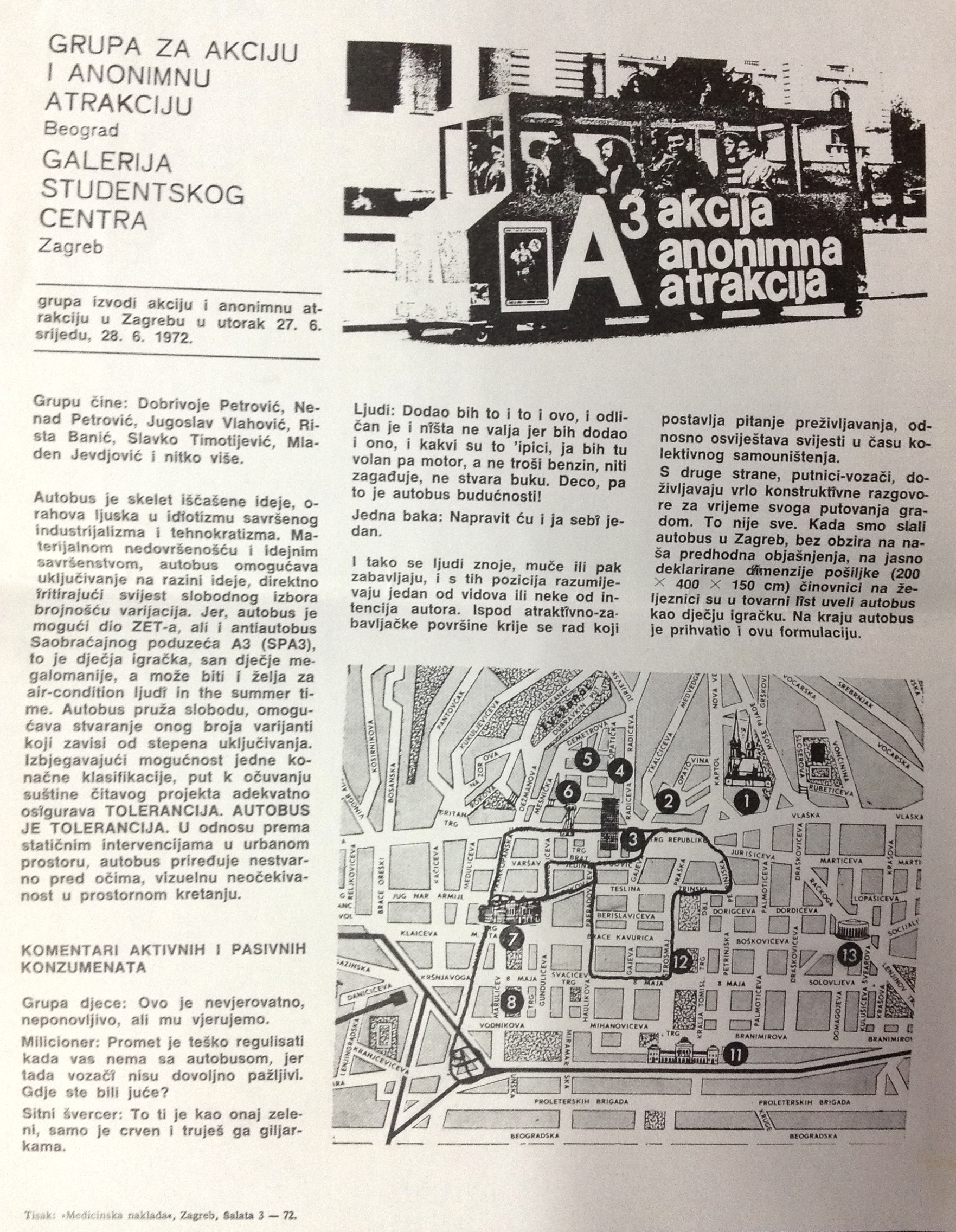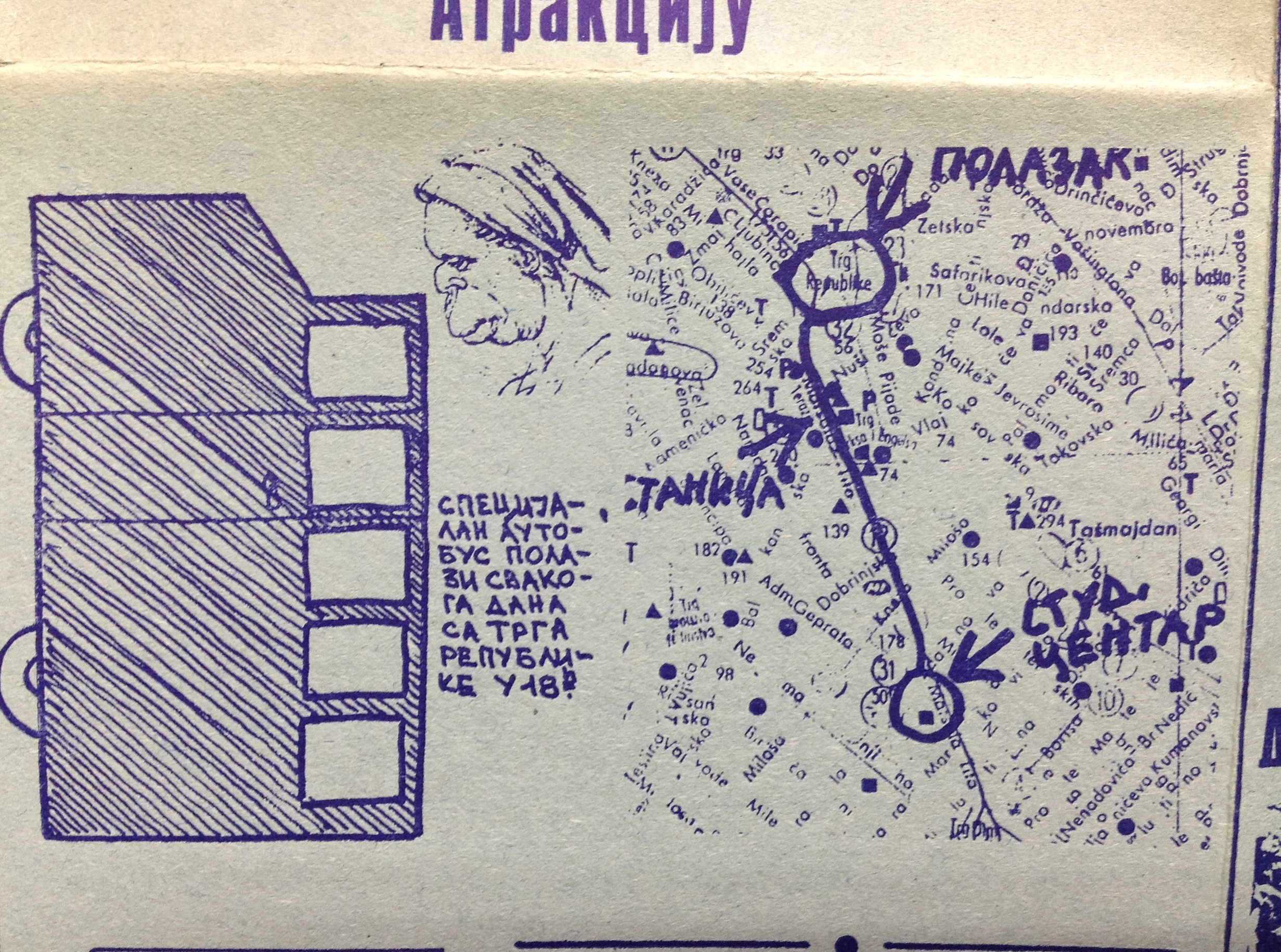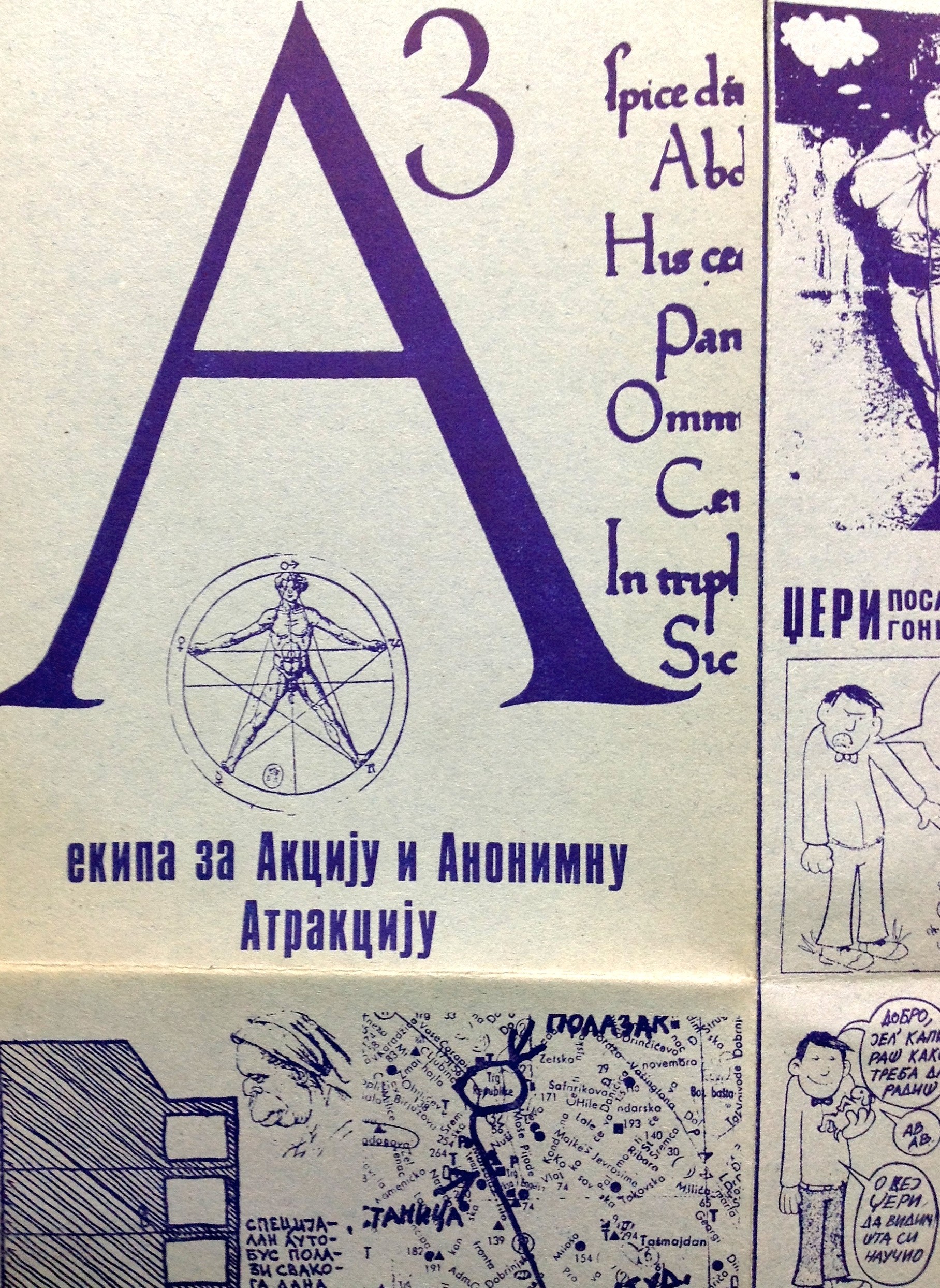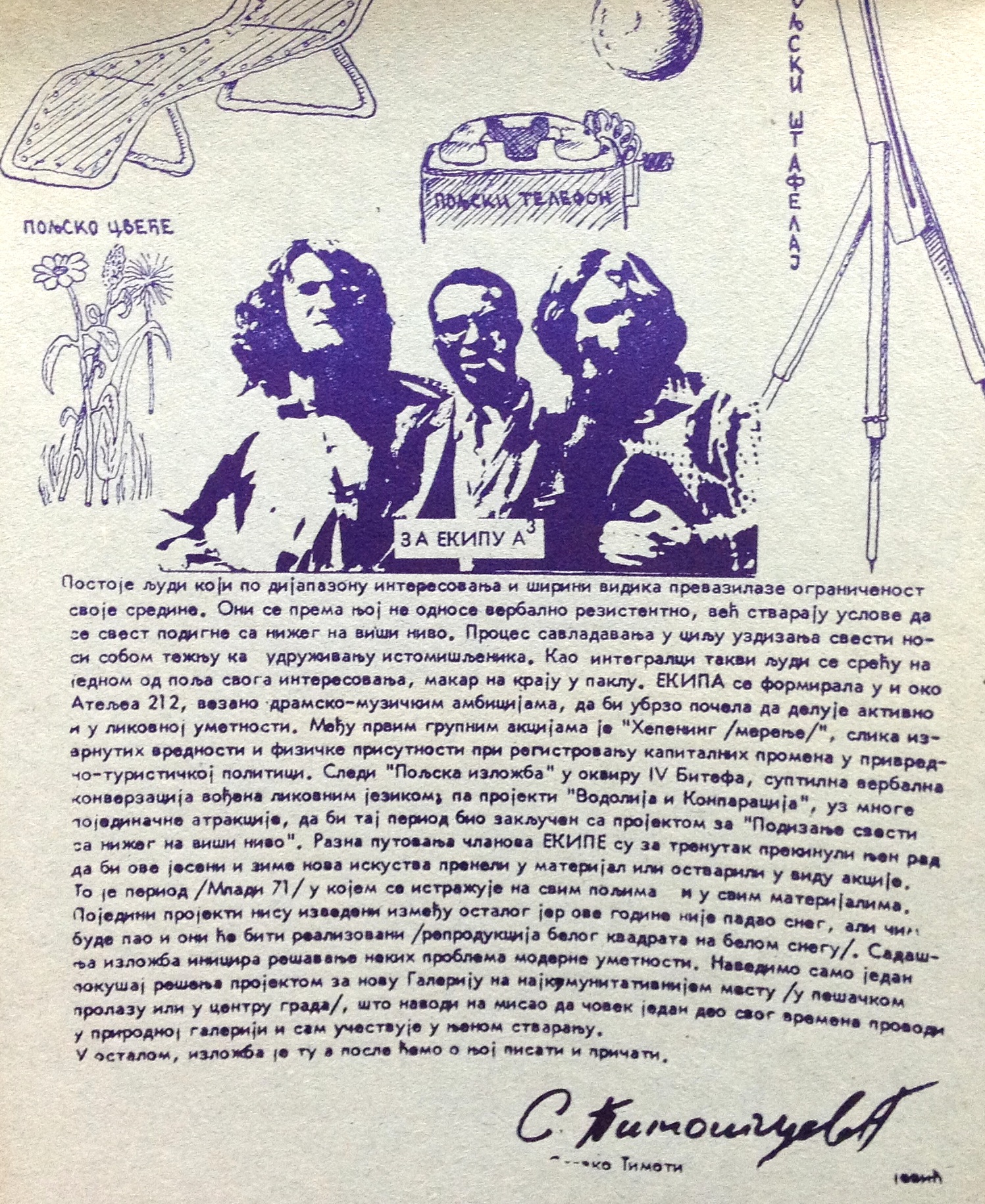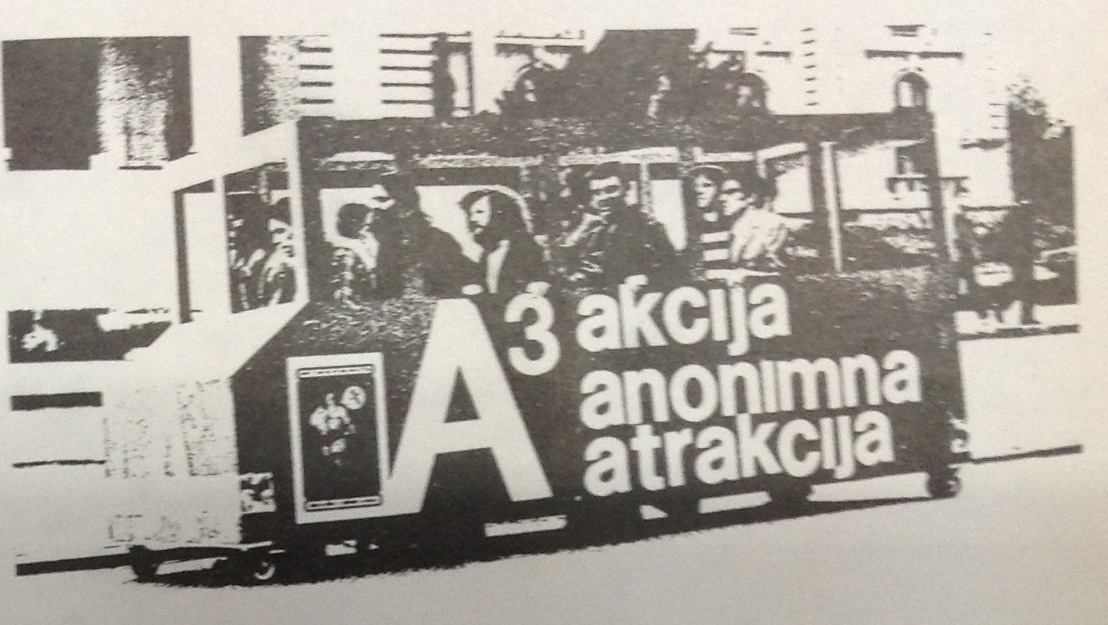AUTOBUS – A3: Action and Anonymous Attraction (Street Happenings and Rock Culture)
The actionist exhibition Autobus by A3, performed in the Belgrade city center in 1973, presents one of the early examples of performative street action within the New Artistic Practices, affiliated with Student Cultural Centre – Belgrade (SKC). The A3 – The Group for Action and Anonymous Attraction worked together between 1970 and 1974 and its members were Risto Banić, Mladen Jevđović, Dobrivoje Petrović, Nenad Petrović, Jugoslav Vlahović and Slavko Timotijević (who joined later in 1972, and, as the only art historian among the members of the group, became important for the articulation and positioning of A3 exhibition work).
The A3 group have been less interested in the context provided by the Gallery of SKC; the space of their operation were rather the streets and city public space, or, in their own words – “the life itself”. Timotijević wrote: “The goal of the group was to produce attraction by means of a sudden, unexpected action”. The group always insisted on their intentionally marginal positioning and ephemeral works and actions, signing up as alternative or amateur actors on the scene of New Art and considering their work as part of broadly understood “rock culture”. The latest conclusion may also stem from the fact that the two members of the group – Dobrivoje Petrović and Jugoslav Vlahović – participated in the controversially perceived installment of the musical Kosa (Hair), taking place in Atelier 212 in 1970 (in which some of the actors occurred naked on the stage for the first time in Belgrade’s theatre) and played in different music bands of the time.
The action Autobus assumed the construction of wooden scaled model of a bus (200x400x150cm), which was handheld from the inside and “driven” by the walk of its passengers, while rolling on small wheels on the front and back. The point was to produce a social event or attraction by engaging “casual passengers” in ludistic dialogue and estranged behavior. Some of the casual participants of the action commented on the bus as a “hippie vehicle”, mocking its DIY structure and the look of artists, while others ironically prized this “ecological ride” due to its natural ventilation (being without glass on windows), the possibility of stretching the legs on the way to work and for the absence of the gas pollution. Participants were exhibited to each other, their comments were immaterially exhibited “in the air” of the city.
Autobus is a skeleton of the off the wall idea, a nutshell within the social idiocy of perfect industrialism and technocratism. By material unfinishedness and ideatory perfection Autobus enables involvement of its participants in the realization of the idea […]This is anti-autobus of the Traffic Enterprise A3, a children’s toy, the dream of children’s megalomania and manifestation of the desire for air-conditioning of the people during the summertime. Autobus offers freedom, enables creation of various versions of the idea, depending on the level of participation. By avoiding the possibility of one definite classification, the way to realization of the project is secured by the Tolerance. AUTOBUS IS TOLERANCE. As difference from static interventions in the urban space Autobus realizes as estranged appearance, visual unexpectability in the spatial circulation.
(exhibition statement of the A3 group)
Slavko Timotijević connects the work of A3 – The Group for action and anonimous attraction with the various forms of rock music, alternative theatre, fluxus mass culture, happening and street action: “It is the fact that the members of A3 have always been well informed about rock music and had a lot of conversations on that matters – we did rely on the sensibility brought about by rock culture. We didn’t have to play music in order to be a rock band. We were the rock band by itself.”
Date: 1972-1973
Participants and organizers: A3 – Risto Banić, Mladen Jevđović, Dobrivoje Petrović, Nenad Petrović, Jugoslav Vlahović and Slavko Timotijević
Location: Belgrade, Zagreb, Novi Sad, Skoplje
